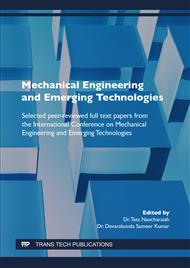p.61
p.69
p.75
p.81
p.93
p.101
p.111
p.117
p.127
Optimization of Time, Part Accuracy and Surface Roughness of TI-6AL-4V Processed through SLM
Abstract:
Selective Laser Melting (SLM) is an Additive Manufacturing (AM) technique that uses a laser to selectively melt metallic powder in a layer-wise manner, in order to produce functional metal components. It offers great freedom in design and facilitates fast iterations, with the potential of speeding up development phases throughout a wide range of industries. Despite these opportunities, its application into industry is limited. One of the problems that are a limiting factor is dimensional accuracy, production time and surface roughness that are introduced to the components during manufacturing. In this work it is focused on to study the influence of process parameters and laser scanning strategy on the build time, part accuracy and surface roughness of as-fabricated Ti-6Al-4V alloy samples through SLM. The specimens are designed and fabricated at various levels of Layer thickness, Laser power and Scanning strategy and its effect on build time,part accuracy and surface roughness are studied
Info:
Periodical:
Pages:
93-100
Citation:
Online since:
September 2022
Keywords:
Price:
Сopyright:
© 2022 Trans Tech Publications Ltd. All Rights Reserved
Share:
Citation:


